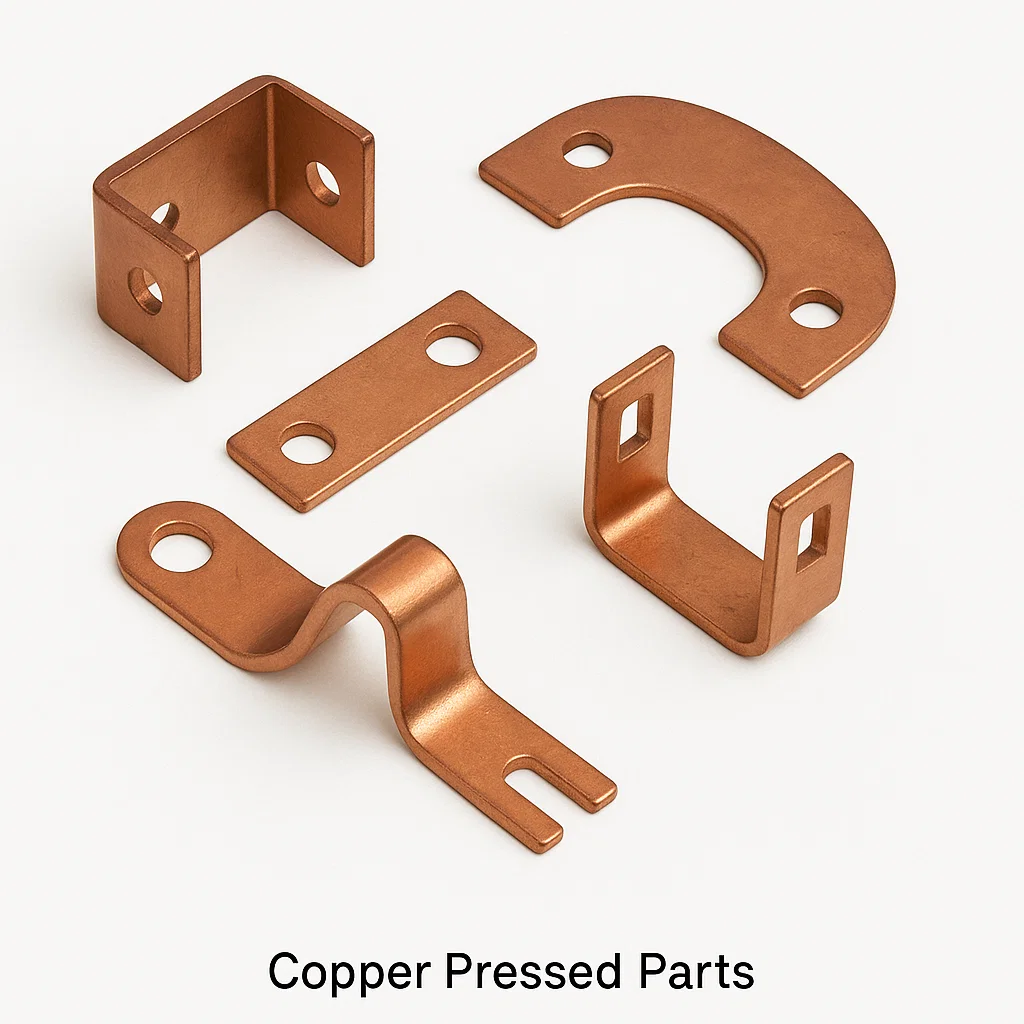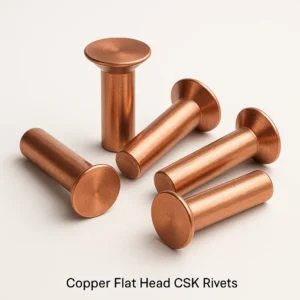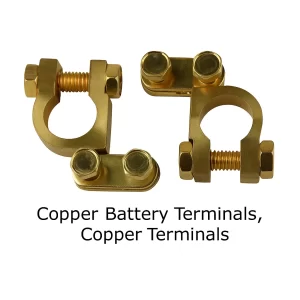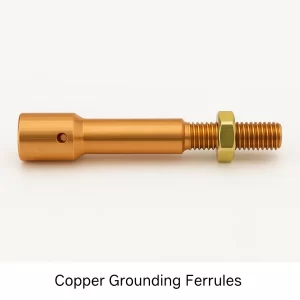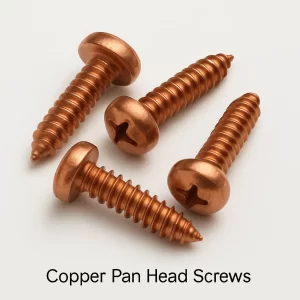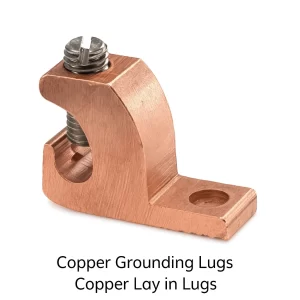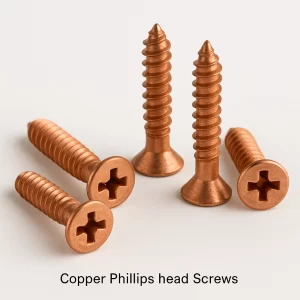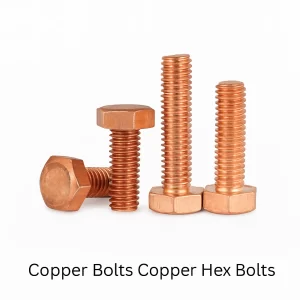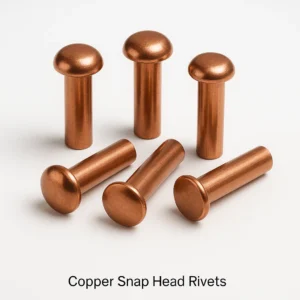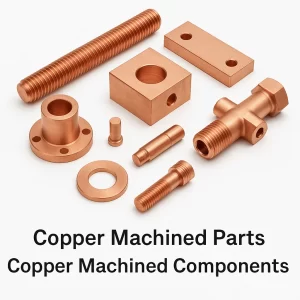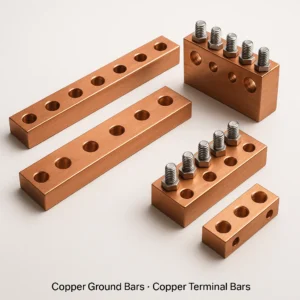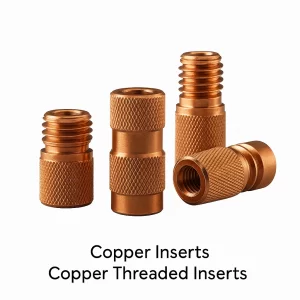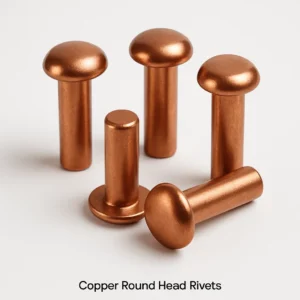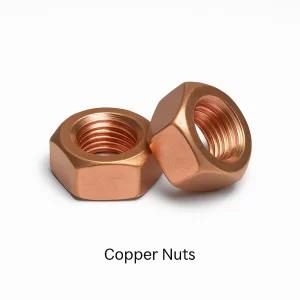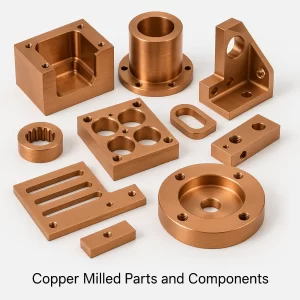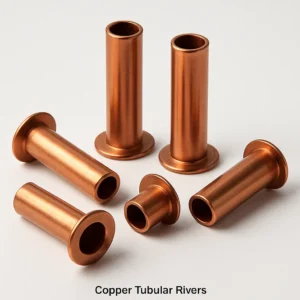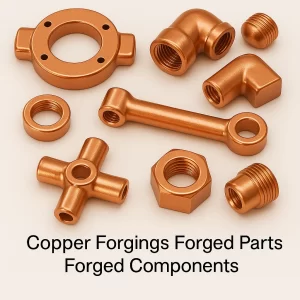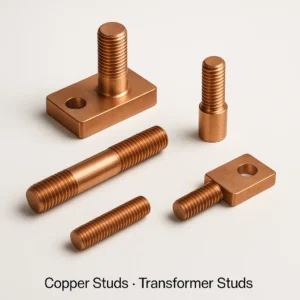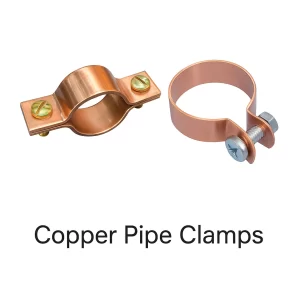Comprehensive Overview of Copper Pressed Parts and Copper Stamped Components
We are one of the leading manufacturers and exporters of Copper Pressed Parts and Copper Stamped Components from India. We have been supplying precision copper pressed parts, copper stamped terminals, copper deep drawn components, copper sheet metal parts, and custom copper stampings to the world market for many decades. Our state-of-the-art manufacturing facility specializes in producing high-quality copper pressed parts using advanced progressive die stamping, precision blanking operations, deep drawing technology, bending and forming processes, embossing and coining operations, and comprehensive secondary operations. With over three decades of global experience in copper metal stamping and pressing, we serve diverse industries including electrical copper pressed terminals and connectors, automotive copper pressed electrical components, electronics copper pressed contacts and shields, telecommunications copper pressed grounding components, appliance copper pressed parts for motors and controls, switchgear copper pressed bus bar components, lighting copper pressed lamp holders and contacts, battery copper pressed terminals and interconnects, and industrial copper pressed electrical hardware. Our expertise encompasses working with various copper grades including pure Copper C11000 pressed parts offering excellent electrical conductivity and formability, Copper C10200 oxygen-free pressed components for high-performance electrical applications, Beryllium Copper C17200 pressed parts for spring contacts and high-strength components, Phosphor Bronze pressed parts for electrical contacts and connectors, Brass pressed components for decorative and functional applications, and Nickel Silver pressed parts for corrosion-resistant electrical components. We manufacture copper pressed parts ranging from small precision terminals with features as small as 0.5mm to large stamped components exceeding 300mm in dimension, all maintaining tight tolerances, superior edge quality, excellent dimensional repeatability, and reliable electrical and mechanical performance.
Our advanced manufacturing capabilities in producing precision copper stamped components extend across multiple metal forming processes including progressive die stamping using automated high-speed presses ranging from 10 tons to 250 tons capacity for high-volume production with tight tolerances, compound die stamping for complex parts requiring multiple operations in single press stroke, transfer die stamping for large or complex components moving between stations, fine blanking for precision edge quality and close tolerances, deep drawing creating cup-shaped or cylindrical components from flat sheet with draw depths up to 4 times diameter, bending and forming operations creating complex three-dimensional shapes from flat blanks, embossing and coining for raised features, logos, or part identification, piercing and punching for holes, slots, and cutouts with close tolerances, shaving operations for precision hole diameters and edge straightness, and assembly operations including staking, clinching, or welding multiple pressed components. Our engineering team possesses deep technical knowledge of copper material properties during stamping operations, springback compensation in die design, blank development and nesting optimization, grain direction considerations for bending and forming, burr minimization strategies, die design for progressive and compound operations, strip layout optimization for material utilization, tonnage calculations, and surface finish requirements ensuring every copper pressed part meets or exceeds customer specifications and industry standards. Our quality management system complies with ISO 9001:2015 standards, IATF 16949 automotive quality specifications, customer-specific pressing requirements, UL recognition for electrical components, and industry standards for electrical, automotive, and electronics applications. We maintain complete traceability of copper raw material certificates, detailed pressing process documentation, dimensional inspection records using optical measurement systems, first piece inspection reports, statistical process control data, and material test reports for every batch of copper pressed parts produced. Our customers across North America, European Union countries, United Kingdom, Australia, Middle East regions, and Southeast Asian markets trust our copper pressing expertise for their critical electrical connection, contact, and component applications.
Copper Pressed Parts – Progressive Die Stamping and Metal Forming
Copper Pressed Parts represent precision components manufactured from copper sheet, strip, or coil through metal stamping and forming processes where material is sheared, bent, drawn, or formed into specific shapes using dies and mechanical or hydraulic presses, providing cost-effective high-volume production with excellent dimensional repeatability and consistency. These copper pressed parts are produced using various stamping methods including progressive die stamping where strip material advances through multiple stations performing sequential operations creating complex parts with numerous features in automated high-speed process, single-stage stamping for simple blanking or forming operations, compound die stamping combining multiple operations in single press stroke, transfer stamping for large components moving between separate dies, and fourslide or multi-slide stamping for wire or strip forming creating complex bent configurations. Copper pressed parts find extensive applications in electrical industry including stamped copper terminals for wire connections providing crimped or soldered connection points, electrical connectors with precise contact geometries, bus bar clips and mounting brackets, switch contacts requiring specific spring properties, circuit breaker components, fuse clips and holders, and electrical distribution hardware, automotive electrical systems including stamped battery terminals, alternator and starter contacts, fuse box terminals, wire harness connectors, sensor contacts, and automotive relay components, electronics manufacturing including precision stamped contacts for connectors, shielding cans for EMI protection, spring contacts for battery connections, grounding clips, PCB mounting terminals, and component lead frames, appliance industry including motor terminals, control switch contacts, thermostat components, lamp holders, and electrical connection hardware, lighting applications including lamp socket contacts, reflector components, mounting brackets, and electrical connection terminals, telecommunications equipment including grounding clips, contact springs, mounting hardware, shielding components, and connector terminals, switchgear and control gear including bus bar supports, terminal blocks, contact fingers, and mounting hardware, battery manufacturing including terminal posts, interconnect straps, cell contacts, and battery holder components, and industrial electrical equipment including distribution panel components, motor connections, control circuits, and instrumentation terminals.
Our copper stamping and pressing services include engineering consultation for part design optimization and design for manufacturing analysis identifying potential stamping challenges, strip layout design and nesting optimization maximizing material utilization and minimizing scrap, die design and fabrication including progressive dies, compound dies, transfer dies, and forming dies using precision CNC machining and EDM, prototype development using soft tooling or prototype dies for design validation, production pressing using automated presses with electronic controls and monitoring, various pressing operations including blanking, piercing, bending, forming, drawing, embossing, and coining, tolerance capabilities from general ±0.1mm to precision ±0.05mm or tighter for critical features, edge quality specifications including standard sheared edge, fine blanked edge, or machined edge quality, surface finish requirements from standard mill finish to polished or plated surfaces, secondary operations including deburring, tumbling, tapping, riveting, welding, or assembly, surface treatments including tin plating for solderability, nickel plating for wear resistance, silver plating for premium electrical contact, gold plating for high-reliability connections, or chemical treatments, and complete documentation with material certificates, dimensional inspection reports, and first article inspection documentation. We accommodate copper pressed part sizes ranging from miniature components with overall dimensions as small as 2mm x 2mm to large stampings exceeding 300mm x 200mm, material thicknesses from 0.1mm to 3.0mm depending on forming requirements, production volumes from prototype quantities to millions of pieces annually, and complexity from simple flat blanked parts to complex three-dimensional formed components with multiple bends, tabs, slots, and embossed features. Material specifications conform to ASTM B152 for copper sheet strip plate and rolled bar, ASTM B194 for beryllium copper strip, ASTM B103 for phosphor bronze strip, and corresponding international standards including EN designations for European copper grades, JIS specifications for Japanese copper standards, and IS standards for Indian copper materials. The lead time for copper pressed parts production typically ranges from four to six weeks for new tooling development and initial production, with shorter lead times of 2-3 weeks for repeat orders using existing tooling depending on order quantity and complexity.
Copper Stamped Components – Deep Drawing and Complex Forming
Copper Stamped Components represent specialized pressed parts requiring advanced forming operations including deep drawing, multiple bending stages, complex contours, or tight tolerances achievable only through precision die design and careful process control. These precision copper stamped components are produced using sophisticated forming techniques including deep drawing processes creating cup-shaped, cylindrical, or rectangular box components from flat blanks with draw ratios up to 2:1 first draw and multiple redraws achieving depths up to 4 times diameter, stretch forming for large contoured panels and curved surfaces, bending operations creating precise angles and radii with springback compensation, coining for dimensional precision and surface detail, progressive forming with multiple bending and forming stages, hydroforming for complex shapes using fluid pressure, and combination processes integrating stamping with other operations. Common deep drawn copper components include electrical terminal housings with cylindrical or rectangular configurations, shielding cans for electronic components with drawn walls and formed flanges, battery terminal posts with deep drawn cylindrical sections and formed connection features, lamp socket bodies with complex internal geometries, connector housings with precise internal dimensions, motor brush holders with deep drawn pockets, sensor housings protecting electrical components, and specialized enclosures for electrical assemblies. Complex formed copper stamped components include spring contacts with multiple bends and precise spring properties, heat sink fins with complex geometries for thermal management, decorative architectural components with embossed patterns and contours, automotive trim components with formed edges and mounting provisions, and specialized brackets combining multiple angles and formed features.
The manufacturing process for precision copper deep drawn and formed components begins with engineering analysis including blank size calculation accounting for material flow during drawing, draw ratio feasibility assessment, tonnage requirements, and potential defect prevention, die design incorporating draw radii optimized for copper alloy and thickness preventing tearing or wrinkling, blank holder design controlling material flow, multi-stage progression planning for deep components requiring multiple draws or redraws, springback compensation in bending and forming dies, and simulation using finite element analysis predicting material flow and potential issues, material procurement of specified copper grade in appropriate thickness with grain direction consideration for deep drawing, blanking operation cutting circular or shaped blanks from sheet or coil, first drawing operation forming initial cup or shape with controlled blank holder pressure and lubricant application, annealing heat treatment between draws for materials requiring softening to enable further reduction, subsequent redrawing operations progressively reducing diameter and increasing depth, trimming operations removing excess material and establishing final height, secondary forming including bending, flanging, or beading, piercing holes or slots in formed components, surface finishing through tumbling, polishing, or cleaning, plating or coating application if specified, dimensional inspection using optical comparators or coordinate measuring machines, functional testing including spring force measurement for contact applications, and assembly operations if required combining multiple pressed components. Our deep drawing and complex forming capabilities include draw depths up to 4 times diameter for cylindrical components, rectangular box draws with corner radii considerations, multiple redraw operations for extreme depth-to-diameter ratios, wall thickness control maintaining uniform thickness throughout drawn section, close dimensional tolerances ±0.05mm achievable on critical features, edge quality specifications from standard trim to precision machined edges, and complex multi-bend configurations with precise angle control.
Copper Material Grades and Pressing Specifications
Copper Material Specifications and Standards for Pressed Parts
| Copper Grade | International Designation | Key Properties | Typical Pressed Applications | Standards |
|---|---|---|---|---|
| Copper C11000 | CW004A (EN), C1100 (JIS), T2 (GB) | 99.9% pure copper, 100% IACS conductivity, excellent formability | Electrical terminals, bus bar components, grounding clips | ASTM B152, BS EN 1652, DIN EN 13599, JIS H3100, IS 191 |
| Copper C10200 | CW008A (EN), C1020 (JIS), TU2 (GB) | Oxygen-free copper, 101% IACS conductivity, premium formability | High-performance terminals, vacuum-tight components | ASTM B152, BS EN 1652, DIN EN 13599, JIS H3100 |
| Beryllium Copper C17200 | CW101C (EN), C1720 (JIS) | High strength 1170-1310 MPa HT, excellent spring properties | Spring contacts, connectors, high-cycle electrical contacts | ASTM B194, BS EN 12166, JIS H3270 |
| Phosphor Bronze C51000 | CW450K (EN), C5191 (JIS) | Good spring properties, wear resistant, 410-620 MPa | Electrical contacts, switch components, connector springs | ASTM B103, BS EN 12166, JIS H3110 |
| Brass C26000 | CW505L (EN), C2600 (JIS) | Cartridge brass 70/30, excellent deep drawing, formability | Deep drawn shells, decorative components, lamp sockets | ASTM B36, BS EN 12163, JIS H3100 |
| Nickel Silver C75200 | CW409J (EN), C7521 (JIS) | 65Cu-18Ni-17Zn, corrosion resistant, good formability | Corrosion-resistant terminals, electronic components | ASTM B122, BS EN 12166, JIS H3100 |
| Copper C19400 | CW105C (EN) | Copper-iron alloy, high strength with good conductivity | High-strength electrical terminals, automotive components | ASTM B301, DIN CW105C |
Copper Pressing Capabilities and Parameters
| Parameter | Progressive Stamping | Compound Stamping | Deep Drawing | Fine Blanking |
|---|---|---|---|---|
| Tolerance | ±0.05mm to ±0.1mm | ±0.05mm to ±0.08mm | ±0.08mm to ±0.15mm | ±0.02mm to ±0.05mm |
| Material Thickness | 0.1mm – 2.5mm | 0.2mm – 3.0mm | 0.3mm – 2.0mm | 0.5mm – 6.0mm |
| Part Size Range | 5mm – 200mm | 10mm – 150mm | 10mm – 150mm dia | 5mm – 100mm |
| Production Rate | 100-300 SPM | 30-100 SPM | 20-80 SPM | 20-60 SPM |
| Edge Quality | Standard sheared | Good sheared | Trimmed edge | Smooth machined |
| Typical Applications | Terminals, clips | Complex flat parts | Housings, cans | Precision connectors |
Manufacturing Processes and Die Technology
Our precision copper pressing and stamping facility employs comprehensive metal forming equipment including mechanical high-speed presses ranging from 10 tons to 80 tons capacity for small to medium copper stampings with stroke rates up to 300 strokes per minute, hydraulic presses from 80 tons to 250 tons capacity for deep drawing and forming operations requiring controlled pressing force, servo-driven presses with programmable motion profiles for complex forming sequences, fine blanking presses with triple-action ram systems for precision edge quality, transfer presses for large component production moving parts between stations, fourslide and multi-slide forming machines for complex bent wire and strip components, coil feeding and straightening equipment for automated progressive die operations, electronic press monitoring systems tracking tonnage and stroke position, automated material handling and part collection systems, and die maintenance equipment including surface grinding and EDM for die repair and modification.
Manufacturing Process Flow: Copper strip or coil material procurement with certified test reports → Material inspection and dimension verification → Coil setup on decoiler and straightener → Progressive die or compound die installation → Press setup and first piece inspection → Production pressing with electronic monitoring → In-process dimensional inspection → Secondary operations if required → Deburring and cleaning → Surface treatment if specified → Final inspection and packaging → Shipment.
Die Design and Fabrication: Our in-house die design and manufacturing capabilities include CAD design of stamping dies with strip layout optimization, finite element analysis simulating forming operations and material flow, die component CNC machining using precision machining centers, wire EDM for intricate punch and die profiles, surface grinding for flatness and parallelism, heat treatment of die steels to 58-62 HRC hardness, die tryout and refinement, and ongoing die maintenance ensuring consistent part quality throughout production runs.
Typical Copper Pressed Components and Applications
Electrical Terminals and Connectors: Progressive stamped copper terminals with crimping barrels, wire entry slots, and mounting tabs, insulation displacement connectors (IDC) with precise contact geometry, ring terminals with formed mounting holes, spade terminals with fork configurations, butt splice terminals connecting wires, pin and socket contacts for connectors, and tab terminals for PCB mounting.
Bus Bar Components: Stamped copper bus bar clips securing bus bars to insulators, bus bar supports with mounting provisions, junction plates connecting multiple bus bars, transition sections adapting between different bus bar configurations, and mounting brackets with specific hole patterns.
Switch and Relay Contacts: Precision stamped contact springs with controlled spring force, movable contacts with specific geometry for arc suppression, stationary contact plates, bi-metal contacts for thermal applications, and relay contact assemblies combining multiple pressed components.
Battery Terminals and Interconnects: Deep drawn battery terminal posts with formed connection features, stamped battery interconnect straps, cell terminal tabs, battery holder contacts, and battery connector components.
Automotive Electrical Components: Stamped fuse box terminals, automotive connector pins and sockets, sensor contacts, relay housing components, ignition system contacts, and wiring harness terminals.
Electronic Component Shielding: Deep drawn EMI shielding cans for RF circuits, pressed shielding covers, grounding clips providing electrical continuity, board-level shields with formed mounting tabs, and component shields with ventilation slots.
Lighting Components: Lamp socket contacts with precise spring properties, reflector components, mounting brackets, lamp holder assemblies, and electrical connection terminals for fixtures.
Appliance Components: Motor terminal assemblies, control switch contacts, thermostat components, heating element terminals, and electrical connection hardware for appliances.
Pressing Tolerances and Quality Standards
Standard Pressing Tolerances for Copper Parts
| Feature Type | Standard Tolerance | Precision Tolerance | Fine Blanking Tolerance |
|---|---|---|---|
| Overall Length/Width | ±0.1mm | ±0.05mm | ±0.03mm |
| Hole Diameter | ±0.08mm | ±0.05mm | ±0.02mm |
| Hole Position | ±0.1mm | ±0.06mm | ±0.03mm |
| Bend Angle | ±2° | ±1° | ±0.5° |
| Bend Radius | +0.1/-0mm | +0.05/-0mm | ±0.03mm |
| Flatness | 0.2mm/100mm | 0.1mm/100mm | 0.05mm/100mm |
| Edge Straightness | 0.15mm/100mm | 0.08mm/100mm | 0.03mm/100mm |
| Perpendicularity | 0.2mm/50mm | 0.1mm/50mm | 0.05mm/50mm |
Quality Control and Inspection
Dimensional Inspection: Every batch of copper pressed parts undergoes comprehensive dimensional inspection using optical measurement systems with video edge detection measuring overall dimensions, hole diameters and positions, slot dimensions, and edge quality, coordinate measuring machines for complex three-dimensional formed components, pin gauges for hole diameter verification, thread gauges for tapped holes if applicable, optical comparators for profile verification and bend angle measurement, and go-no-go gauges for critical dimensions requiring functional verification.
First Piece Inspection: Complete dimensional verification of first pressed parts from production run with all features measured including hole positions within ±0.05mm tolerance, bend angles within ±1 degree, overall dimensions, edge quality assessment, comparison to engineering drawing specifications, identification of any deviations, die adjustment if required before production continuation, and customer approval for critical components before releasing production quantities.
Statistical Process Control: Ongoing monitoring during production runs using statistical sampling plans per ISO 2859, control charts tracking critical dimensions, press tonnage monitoring detecting die wear or material variations, automated vision inspection systems for high-volume production verifying part presence and orientation, and corrective action procedures for out-of-specification conditions.
Material Verification: Chemical composition analysis using optical emission spectroscopy confirms copper grade matches material certification, hardness testing for spring contacts validates proper temper condition, conductivity testing verifies electrical properties for electrical applications, and material certificates from copper supplier document chemical analysis and mechanical properties.
Functional Testing: Spring force measurement for contact applications using calibrated force gauges, insertion force testing for connector contacts, contact resistance measurement for electrical terminals, and assembly testing verifying fit with mating components.
Documentation: Material certificates with chemical analysis, dimensional inspection reports with actual measurements, first article inspection reports for new parts, statistical process control data for production runs, surface treatment certifications if applicable, and certificate of conformance.
Industries and Applications
Electrical Equipment Manufacturing: Stamped copper terminals for wire connections, bus bar components for power distribution, switch contacts for control equipment, circuit breaker components, fuse holders and clips, grounding hardware, and electrical connection terminals.
Automotive Industry: Battery terminal components, fuse box terminals and clips, automotive connector contacts, sensor terminals, relay housing components, wiring harness terminals, ignition system contacts, and automotive electrical hardware.
Electronics Manufacturing: Precision stamped connector contacts, EMI shielding cans and covers, spring contacts for battery connections, grounding clips for circuit boards, PCB mounting terminals, lead frames for semiconductor packaging, and electronic component terminals.
Appliance Industry: Motor terminal assemblies, control switch contacts, thermostat components, heating element terminals, timer contacts, relay components, and electrical connection hardware for white goods.
Lighting Industry: Lamp socket contacts and holders, reflector components, mounting brackets and hardware, ballast connection terminals, LED heat sink components, and fixture electrical hardware.
Telecommunications: Equipment grounding clips and hardware, connector terminal contacts, shielding components for RF equipment, mounting brackets, rack hardware, and telecommunications electrical connections.
Battery Manufacturing: Terminal posts and connectors, cell interconnect straps, battery holder contacts, charging contacts, and battery management system connections.
Industrial Controls: Control panel terminals, relay contacts, timer components, sensor terminals, instrumentation connections, and industrial electrical hardware.
Performance Specifications
Copper Pressed Parts Performance Parameters
| Parameter | Pure Copper | Beryllium Copper | Phosphor Bronze | Brass C26000 |
|---|---|---|---|---|
| Tensile Strength | 220-260 MPa | 1170-1310 MPa HT | 410-620 MPa | 340-450 MPa |
| Electrical Conductivity | 100% IACS | 22-28% IACS | 15% IACS | 28% IACS |
| Spring Properties | Poor | Excellent | Good | Fair |
| Deep Drawing Capability | Excellent | Fair | Good | Excellent |
| Formability Rating | Excellent | Good (annealed) | Good | Excellent |
| Typical Thickness Range | 0.2-3.0mm | 0.1-2.0mm | 0.2-2.5mm | 0.3-3.0mm |
| Contact Resistance | <10 mΩ | <20 mΩ | <30 mΩ | <40 mΩ |
Frequently Asked Questions
Q1: What minimum order quantities do you require for copper pressed parts?
Minimum order quantities depend on tooling requirements and production setup. For new parts requiring new die fabrication, typical minimum 5,000-10,000 pieces to justify tooling investment, with lower quantities possible for prototype tooling. For existing tooling, minimum quantities typically 1,000-2,000 pieces depending on setup time and material utilization. High-volume production runs offer best unit pricing through amortization of setup costs and material optimization.
Q2: How do you handle springback in copper forming operations?
Springback compensation incorporated in die design through overbending to achieve final angle after elastic recovery, selection of appropriate punch and die radii for material thickness, proper material grain direction relative to bend axis, controlled forming speed and dwell time, and post-forming operations including coining or restrike if required for critical angles. Beryllium copper and phosphor bronze exhibit more springback than pure copper requiring greater compensation.
Q3: What is the typical lead time for copper pressed parts with new tooling?
Standard lead time is four to six weeks for new tooling development and initial production, accounting for engineering analysis and strip layout design, die design and CAD modeling, die fabrication using CNC machining and EDM, die tryout and refinement, first article inspection and approval, and initial production run. Repeat orders using existing tooling have shorter lead times of 2-3 weeks depending on order quantity and scheduling.
Q4: Can you provide plating or surface treatments for copper pressed parts?
Yes, we provide comprehensive surface treatment services including tin plating for solderability and corrosion protection with thickness 2-10 microns per ASTM B545, nickel plating for wear resistance and corrosion protection, silver plating for premium electrical contact applications, gold plating for high-reliability connections in aerospace and military applications, selective plating for specific contact areas, and chemical treatments including passivation or conversion coating. All plating processes controlled and tested per applicable standards.
Q5: What documentation is provided with copper pressed parts shipments?
We provide comprehensive documentation including material certificates from copper supplier with chemical analysis and mechanical properties, dimensional inspection reports showing actual measured values for critical features, first article inspection reports for new part numbers with complete dimensional verification, statistical process control data for production runs, surface treatment certifications including plating thickness measurements if applicable, certificate of conformance stating compliance with purchase order specifications, and traceability documentation linking production batches to material certifications and inspection records.
Why Choose Our Copper Pressing Services
Three Decades of Metal Stamping Excellence: With over 30 years of copper pressing and stamping experience serving electrical, automotive, electronics, appliance, and telecommunications industries across global markets, we have developed deep expertise in die design, progressive stamping, deep drawing, and quality control for copper and copper alloy components.
Comprehensive Pressing Capabilities: Our facility houses mechanical presses from 10 to 250 tons capacity, hydraulic deep drawing presses, fine blanking presses for precision edge quality, fourslide forming equipment, in-house die design and fabrication capabilities, automated coil feeding systems, and complete secondary operations including tapping, assembly, and surface treatment.
Advanced Die Design and Engineering: Our experienced die designers utilize CAD/CAM software for optimal strip layouts, finite element analysis simulating forming operations, springback compensation methodologies, material flow analysis preventing defects, and design for manufacturability consultation optimizing part geometry for pressing operations and reducing tooling costs.
Multiple Copper Grade Expertise: We press components from pure copper C11000 for electrical conductivity applications, beryllium copper for spring contacts and high-strength components, phosphor bronze for electrical contacts and wear resistance, various brass alloys for deep drawing and decorative applications, and nickel silver for corrosion-resistant electrical components.
Quality Assurance and Process Control: Every production run includes first piece inspection with complete dimensional verification, statistical process control monitoring critical dimensions, automated vision inspection for high-volume production, in-process dimensional checks, functional testing for spring contacts and electrical terminals, and comprehensive documentation providing traceability and conformance certification.
Engineering Support and Design Optimization: Our experienced engineering team provides design for manufacturability consultation optimizing part geometry for pressing operations, tolerance analysis identifying critical dimensions, material selection guidance based on electrical, mechanical, and forming requirements, strip layout optimization maximizing material utilization, and prototype development validating designs before tooling investment.
Competitive Manufacturing Advantage: Manufacturing in India provides significant cost advantages allowing us to offer copper pressing services typically 30-40% lower cost than North American or European manufacturers without compromising quality standards, dimensional accuracy, edge quality, or material specifications, with transparent pricing including tooling costs amortized over production quantities.
International Standards Compliance: Our copper pressed parts conform to international standards including ASTM material specifications, ISO dimensional and geometric tolerancing, UL recognition for electrical components, customer engineering drawings and specifications, IATF 16949 automotive quality requirements, and industry-specific standards for electrical, electronics, and telecommunications applications.
Glossary of Technical Terms
Progressive Die Stamping: Metal forming process where strip material advances through multiple stations performing sequential operations.
Deep Drawing: Metal forming process creating three-dimensional cup or box shapes from flat sheet through plastic deformation.
Compound Die: Die performing multiple operations simultaneously in single press stroke.
Fine Blanking: Precision blanking process producing smooth sheared edges with close tolerances.
Springback: Elastic recovery of material after forming operation causing deviation from die shape.
Blank Holder: Component in drawing die controlling material flow and preventing wrinkling.
Draw Ratio: Relationship between blank diameter and punch diameter in deep drawing operations.
Grain Direction: Directional alignment of metal grain structure affecting formability and spring properties.
Nesting: Arrangement of parts on material strip to maximize material utilization and minimize scrap.
Burr: Sharp edge or raised material on sheared or punched edges requiring removal.
Coining: Metal forming operation applying high pressure creating precise dimensions and surface detail.
SPM (Strokes Per Minute): Production rate measurement indicating press cycles per minute.
Call to Action – Contact Us Today
Ready to discuss your copper pressing and stamping requirements? Our experienced team is here to help you with precision copper pressed parts and stamped components for your electrical, automotive, electronics, and industrial applications.
Request a Quote: Send us your technical drawings, material specifications, and quantity requirements to sales@jambrass.com for a detailed quotation within 24 hours including tooling costs and piece prices.
Call Us Directly: Speak with our technical sales team at +91-22-43449300 / +91-22-43449323 during business hours (Monday-Saturday, 9:00 AM – 6:00 PM IST) to discuss your copper pressing requirements.
Visit Our Offices:
Office Address: 1406, 14th Floor, Dalamal Tower, Nariman Point, Mumbai – 400021, Maharashtra, India
Factory Address: Plot 10B, GIDC Industrial Estate, Shanker Tekari, Udyognagar, Jamnagar, Gujarat, India – 361004
Contact Person: Mr. Mehul Vora
Quality Documentation: Request sample certificates of conformance, material test reports, dimensional inspection records, and pressing capability documentation by contacting sales@jambrass.com

